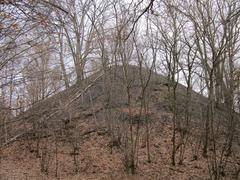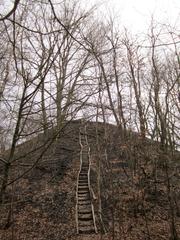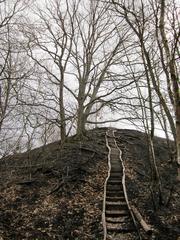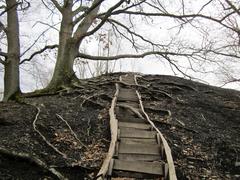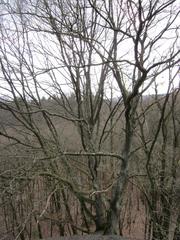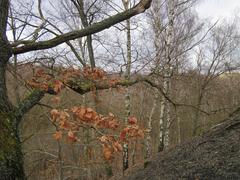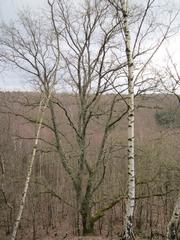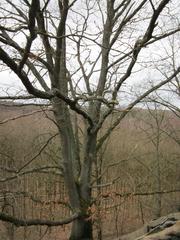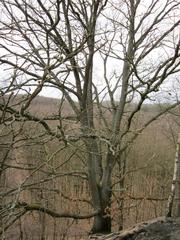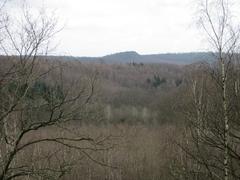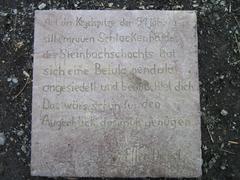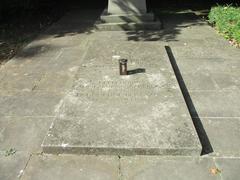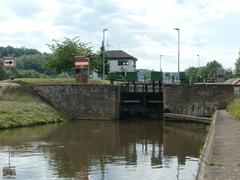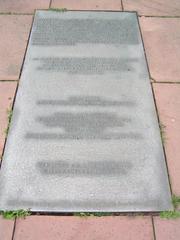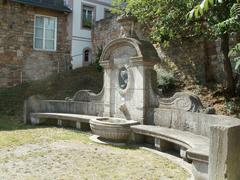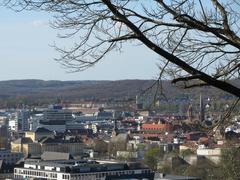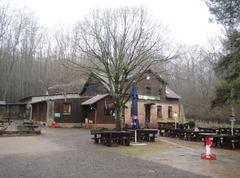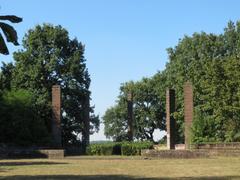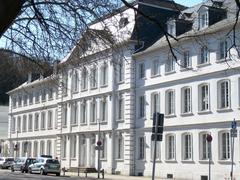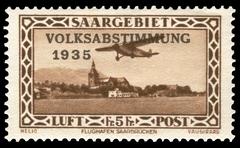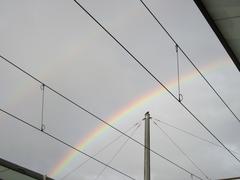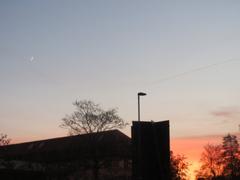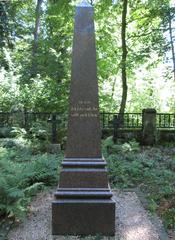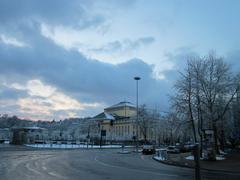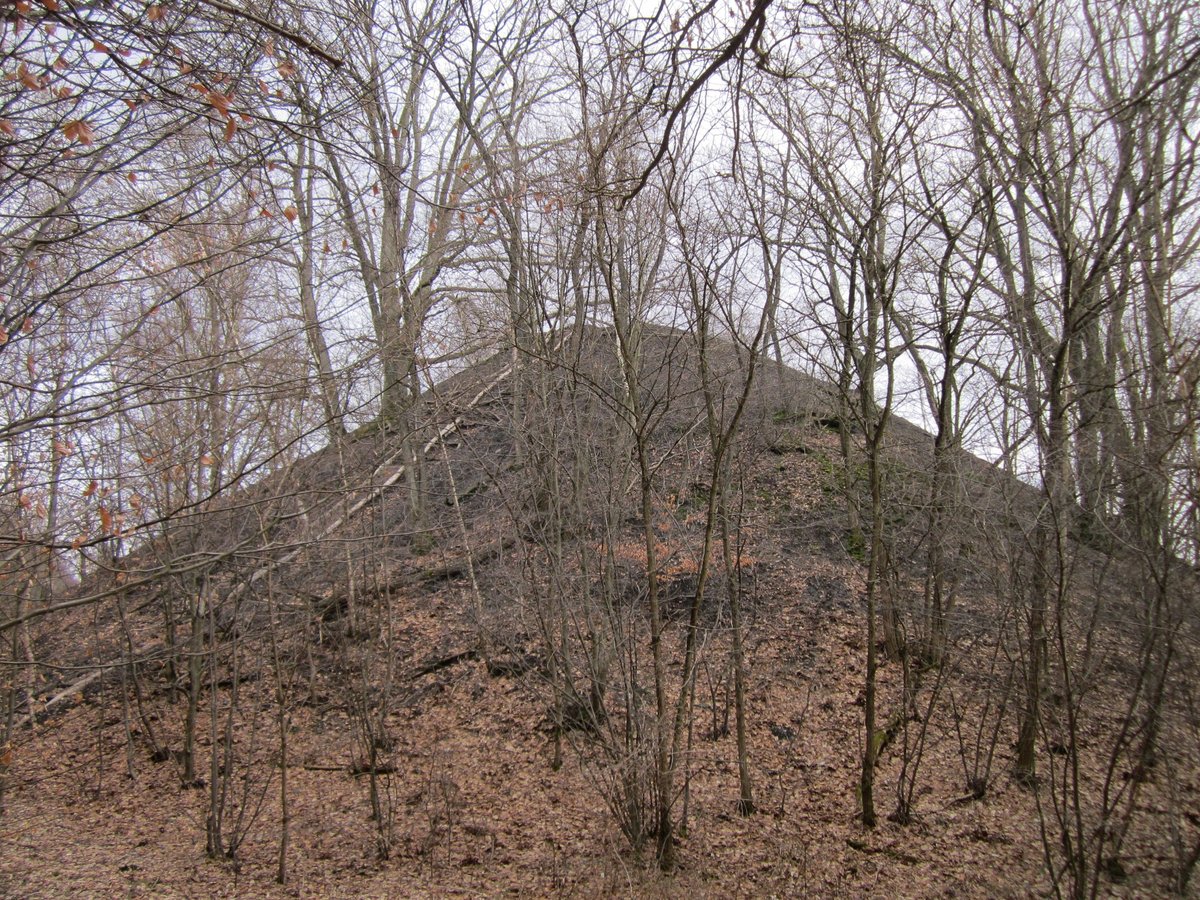
Kleiner Fuji Saarbrücken: Visiting Hours, Tickets, and Travel Guide
Date: 14/06/2025
Introduction: Kleiner Fuji in Saarbrücken – History and Significance
Kleiner Fuji—also known as “Little Fuji”—is a striking landmark on the outskirts of Saarbrücken, Germany. Born from the region’s coal mining heritage as a spoil heap, it has transformed from an industrial relic into a green oasis and cultural symbol. Today, Kleiner Fuji is celebrated for its blend of panoramic views, ecological restoration, and historical resonance, making it a must-visit destination for outdoor enthusiasts, families, and history buffs alike. This comprehensive guide provides essential information about Kleiner Fuji visiting hours, ticket policies, accessibility, travel tips, and the broader significance of this unique site within Saarland’s industrial and ecological landscape (Nicolos Reiseblog, Delve into Europe, Outdooractive, Tourismus Saarbrücken).
Quick Navigation
- Introduction
- History: Saarbrücken’s Industrial Past & Kleiner Fuji’s Origin
- Visitor Information: Hours, Tickets, Trails, Accessibility
- Nearby Attractions & Guided Tours
- Ecological Transformation & Biodiversity
- Cultural and Educational Value
- Visitor Experience: Tips, Events, FAQ
- Practical Information (German section)
- Conclusion & Recommendations
- Sources
History: Saarbrücken’s Industrial Past & The Emergence of Kleiner Fuji
Saarbrücken’s Industrial Heritage
Saarbrücken’s history is deeply intertwined with the Saar River and its strategic location near the French border. From Roman times through the Baroque period, the city evolved into a regional hub. The Industrial Revolution marked a pivotal era, with the Saarland region emerging as a powerhouse of coal mining and steel production. By the late 19th century, the area’s mines fueled local and international industry, leaving a significant mark on the city’s economy and urban landscape (Nicolos Reiseblog).
The Creation of Kleiner Fuji
Kleiner Fuji (or “Kleiner Fudji”) is a conical spoil heap (Bergbauhalde) formed by the accumulation of waste from the nearby coal mines, notably the Grube Kirchheck. Its name humorously references Japan’s Mount Fuji due to its distinctive shape. Over decades of industrial use, the heap became a visible legacy of Saarbrücken’s mining era (Delve into Europe). Following the closure of the mines, the site began a new chapter as a reclaimed natural and cultural landmark.
Visitor Information: Hours, Tickets, Trails & Accessibility
Visiting Hours and Admission
- Hours: Kleiner Fuji is accessible year-round, 24/7, with no restricted opening or closing times. Daylight visits are advised for safety and the best views.
- Tickets: Access is free—no tickets or admission fees are required.
Access and Trails
- Location: About 10 km northwest of Saarbrücken city center, in the Saarkohlenwald.
- Transport: Reachable by car (parking at Scheune Neuhaus), public transport (Saarbahn Line 1 to “Heinrichshaus”), bicycle, or on foot. Mapcarta
- Trails: Well-marked hiking and cycling paths lead from the parking lot and public transit stops to the summit. The main ascent is moderate but includes uneven terrain and a steep staircase.
- Recommended Equipment: Sturdy footwear and weather-appropriate clothing.
Accessibility
- General: Trails are mostly natural and include earthy, rooty sections and a steep staircase to the summit.
- Wheelchair/Pram Access: Not recommended due to unpaved and steep terrain.
- Families: Suitable for older, sure-footed children. For younger children, use a carrier.
Facilities & Amenities
- Nearby Food & Restrooms: Forsthaus Neuhaus and Naturfreundehaus Kirschheck offer refreshments and restrooms.
- Picnic Areas: Available along the trails and at scenic spots.
- Parking: Free parking at Scheune Neuhaus (coordinates: 49.267761, 6.983902).
Nearby Attractions & Guided Tours
- Cultural Sites: Ludwigskirche, Saarbrücken Castle, and the UNESCO-listed Völklingen Ironworks.
- Museums: Historisches Museum Saar
- Guided Tours: Seasonal walks and educational excursions focusing on mining heritage, ecology, and local culture. Check local tourism websites or Outdooractive for details.
Ecological Transformation & Biodiversity
From Spoil Heap to Nature Refuge
Kleiner Fuji is a prime example of successful ecological restoration. Once surrounded by mining infrastructure, the hill now anchors the Steinbachtal/Netzbachtal nature reserve—often called the “primeval forest outside Saarbrücken’s gates” (Outdooractive). The area has been largely left to rewild, allowing nature to reclaim the land.
Biodiversity
- Flora: Oak, beech, and hornbeam trees; wildflowers, ferns, and mosses.
- Fauna: Woodpeckers, songbirds, foxes, deer, bats (in old mining tunnels), and abundant invertebrates.
- Habitat Value: The forest supports a diverse ecosystem and serves as an urban biodiversity hotspot (Visit Saarbrücken).
Ecosystem Services
- Regulates microclimates and mitigates the urban heat island effect.
- Helps with water management and soil stabilization.
- Supports climate adaptation through native vegetation.
Cultural and Educational Value
Regional Identity & Community Engagement
Kleiner Fuji is a cultural touchstone, hosting community events, art installations, and guided walks. It is a favored spot for hikers, local families, and photography enthusiasts. The playful name and panoramic views have become part of Saarbrücken’s identity (Delve into Europe).
Educational Opportunities
- Environmental Education: Interpretive signage and school programs highlight ecological succession, restoration practices, and biodiversity.
- Industrial Heritage: The site is integrated into Saarland’s network of heritage routes, with guided tours exploring mining history and the transformation of the landscape (Outdooractive).
Visitor Experience: Tips, Events, and FAQ
Unique Features
- Summit Views: Panoramic vistas over the Saarkohlenwald, Saarbrücken, and on clear days, into France.
- Photo Opportunities: Sunrise and sunset offer dramatic lighting.
- Events: Regular walks, nature workshops, and cultural festivals.
Practical Tips
- Best Time to Visit: Spring to autumn, especially in dry weather.
- Prepare: Bring water, snacks, sun protection, and a camera.
- Stay on Trails: Respect the wild character of the “Urwald” (primeval forest).
FAQ
Q: What are Kleiner Fuji’s visiting hours?
A: Open year-round, 24/7. Daylight recommended for safety.
Q: Is there an entrance fee?
A: No, access is free.
Q: How do I get there?
A: By car to Scheune Neuhaus parking, or by Saarbahn Line 1 to “Heinrichshaus,” then on foot.
Q: Is the site accessible for wheelchairs or strollers?
A: Not suitable due to steep, uneven terrain.
Q: Are dogs allowed?
A: Yes, but keep them on a leash.
Q: Are there guided tours?
A: Yes, check local tourism portals for schedules.
Praktischer Abschnitt auf Deutsch: Besuch des Kleinen Fuji in Saarbrücken
Anreise & Zugang
- Mit dem Auto: Parkplatz Scheune Neuhaus, ca. 1,5 km Fußweg zum Gipfel.
- ÖPNV: Saarbahn Linie 1 bis „Heinrichshaus“ (300 m Zubringerweg).
Weitere Infos: touren.saarland
Öffnungszeiten & Eintritt
- Ganzjährig frei zugänglich.
- Kein Eintrittspreis.
Wanderwege & Aufstieg
- Länge: Rundwege 6–10 km, Aufstieg über steile Treppe (ca. 30 m Höhenunterschied).
- Empfehlung: Trittsicherheit, festes Schuhwerk.
Infrastruktur
- Einkehr: Forsthaus Neuhaus, Naturfreundehaus Kirschheck.
- Picknickplätze: Entlang der Wege.
Sicherheit & Tipps
- Ausrüstung: Wasser, wetterfeste Kleidung, ggf. Wanderstöcke.
- Bei Nässe: Vorsicht auf rutschigen Wegen und der Treppe.
Besuchergruppen
- Für Familien mit älteren Kindern geeignet.
- Nicht barrierefrei.
Conclusion and Recommendations
Kleiner Fuji Saarbrücken is a living symbol of transformation—where industrial heritage, cultural identity, and nature intersect. With free, year-round access and captivating trails, it offers a rewarding experience for every visitor. Enhance your trip by exploring nearby historical sites, joining a guided walk, or simply enjoying the peace atop the summit.
For detailed maps, live updates, and exclusive content, download the Audiala app. Stay informed about community events and conservation efforts by following official tourism channels and social media.
